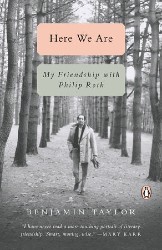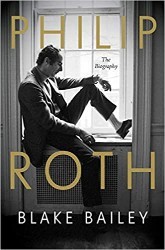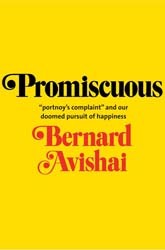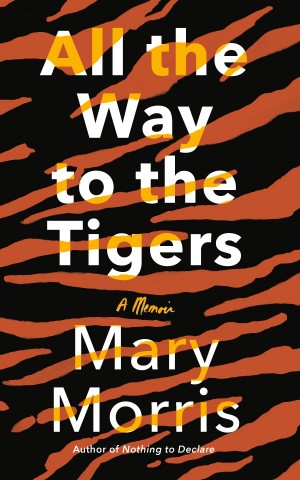The popular imagination may see Philip Roth as the transgressive author of Portnoy’s Complaint, the scandalous bad boy of American letters. Posterity is more likely to appreciate him as the greatest American novelist of the mid- and late 20th century, eclipsing Saul Bellow, Bernard Malamud, Norman Mailer, or John Updike. Masterpieces like American Pastoral and The Plot Against America, and short stories such as “Goodbye Columbus,” will speak to readers for generations to come.
In his biography of Roth, Ira Nadel — who wrote a Critical Companion to Philip Roth—explores the many connections between the novelist’s work and his life. He doesn’t read the fiction as a disguised version of Roth’s life, but rather treats it as a way of understanding the man. Taken together, the fiction and the life mirror certain recurring themes that continually preoccupied Roth: secrets, illness, betrayal, and rebellion.
Of course Roth did use actual incidents in fictional form. He married his first wife, Margaret Martinson Williams, after she faked a pregnancy test and told Roth she was pregnant, an episode which later appeared in his 1974 novel My Life as a Man. His marriages and other relationships often spawned counterparts in his fiction directly or indirectly. It was Roth’s way of working out his inner turmoil, his seething anger or resentment. As he once remarked, “Those goyim: they don’t know anything about hate, that’s their trouble.”
Nadel takes particular interest in Roth’s literary influences, from Henry James and Thomas Wolfe to Franz Kafka and Bruno Schulz, and his literary friends including James Atlas, Saul Bellow, Leslie Fiedler, Janet Malcolm, Cynthia Ozick, Susan Sontag, and William Styron. Nadel recognizes the groundbreaking importance of Roth’s “Writers from the Other Europe” book series, inspired by a visit to Czechoslovakia in 1972. He even follows Roth’s journey from publisher to publisher, endlessly pursuing better deals.
Nadel uses the messy facts of Roth’s private life in order to trace their effect on his fiction. Noting the critic Vivian Gornick’s opinion that “Roth’s women are only sexual objects, further vilified as they become victims of older men,” Nadel finds the same attitude in the protagonists of The Dying Animal and The Human Stain. While Roth was furious about his ex-wife Claire Bloom’s “revenge memoir,” reports Nadel, five different wives in Roth’s subsequent fiction died or disappeared.
In short: for a solid account of Philip Roth’s life and work, Ira Nadel’s Philip Roth: A Counterlife is the book we’ve been waiting for. It’s revealing, perceptive, sensitive, sensible, and immensely readable, a triumph of insight and scholarship.
Bob Goldfarb is President Emeritus of Jewish Creativity International.





